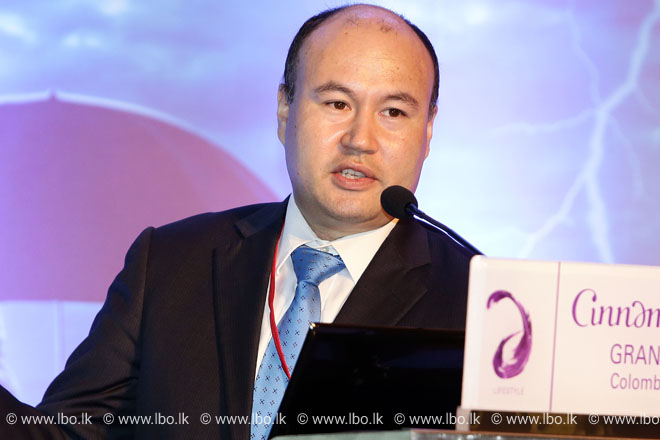Challenging external environment for Sri Lanka in 2017: WB economist

Nov 30, 2016 (LBO) – Sri Lanka will face a challenging external macroeconomic environment ahead and structural reforms needs to be consistent with improved competitiveness, an economist said.
Senior Country Economist at World Bank, Sri Lanka, Ralph van Doorn, speaking at the LBR LBO Debrief: Economic & Business Climate Outlook 2017, said major existing export markets are not projected to grow fast in 2017.
“Sri Lanka needs to address anti-export bias, open new markets with FTAs, GSP+ and products to structurally increase exports,” Doorn said.
A direct impact of a slowdown in China is limited, but there may an indirect impact through public sector and SOE lending to Sri Lanka and inward FDI, he said.
“The country needs to remove obstacles to FDI attraction (legal, trade, tax) and develop realistic FDI vision and promotion strategy.”
Doorn said tightening global financial conditions and interest rate hikes in the US could lead to renewed capital outflows -- pressure on the exchange rate could lead to more expensive external debt.
“Sri Lanka should stay on revenue-led fiscal consolidation path by strengthening the tax base, making tax system fairer, simpler and more efficient and revisiting expenditure priorities.”
Doorn said reducing VAT exemptions will make tax system simpler, strengthen tax base and reduce untargeted subsidies to non-poor.
“Country also needs to reduce external financing needs by dealing pro-actively with Eurobonds maturities from 2019, and deepen the domestic market,” he said referring to a bunching of maturities from 2019 onwards.
He said with tepid global growth, remittance flows to low and middle income countries seem to have entered “new normal” of slow growth.
Remittances to South Asia are expected to decline by 2.3 percent in 2016, following a 1.6 percent decline in 2015; however flows to Sri Lanka projected to increase modestly.
Remittance flows to low and middle income countries are projected to reach 442 billion US dollars in 2016, an increase of 0.8 percent over 2015.
Updated
